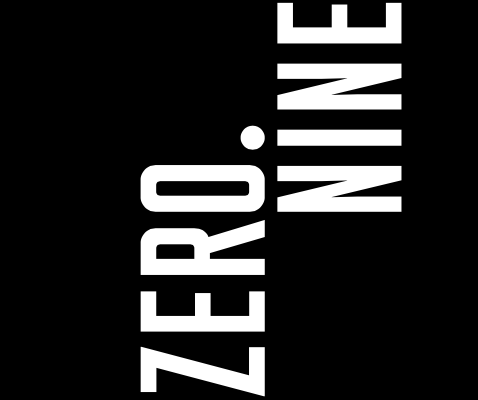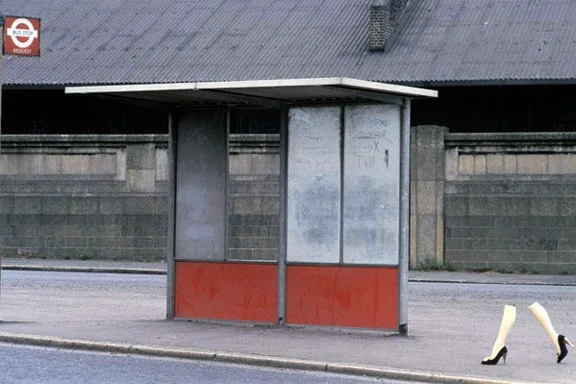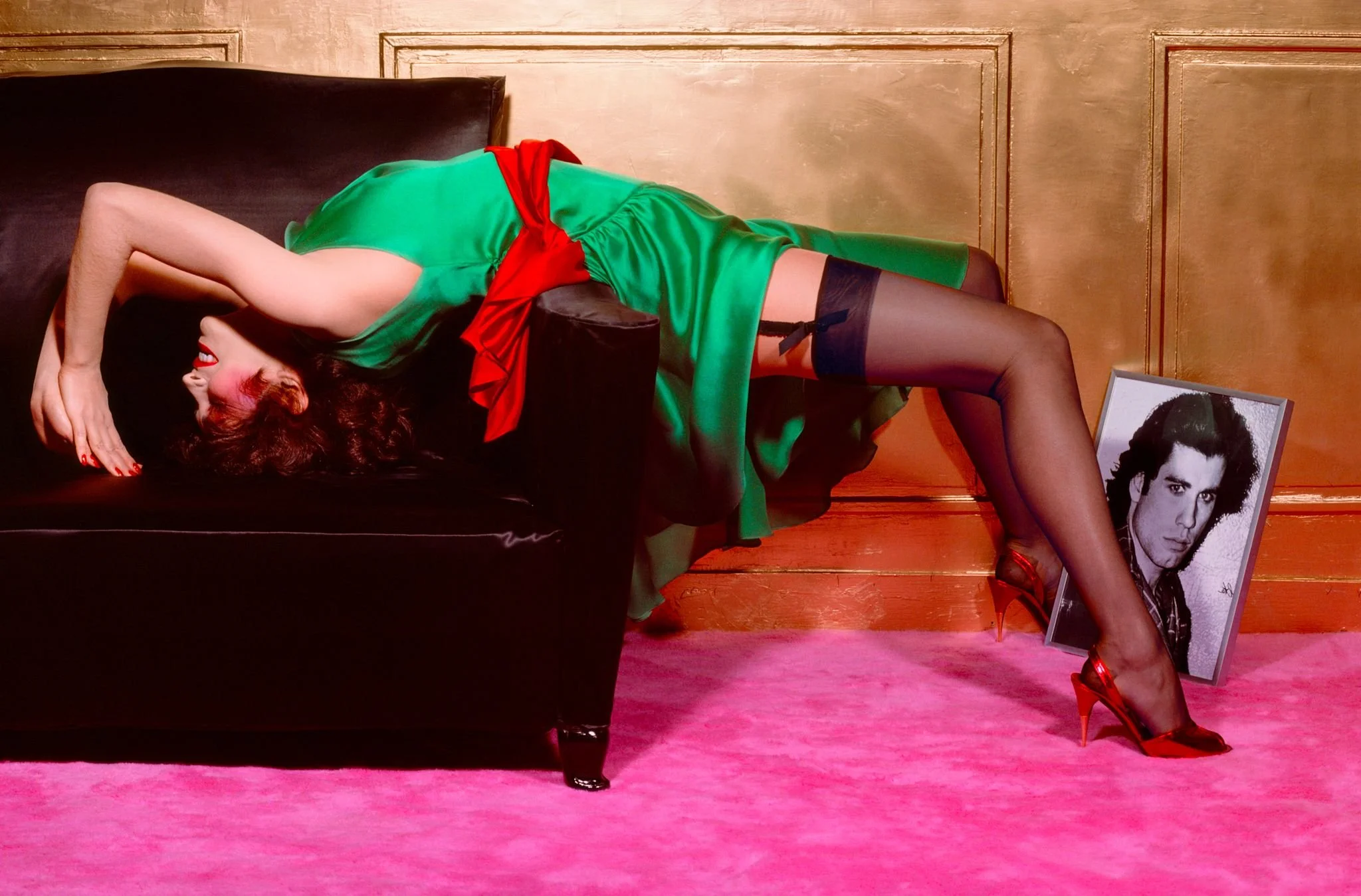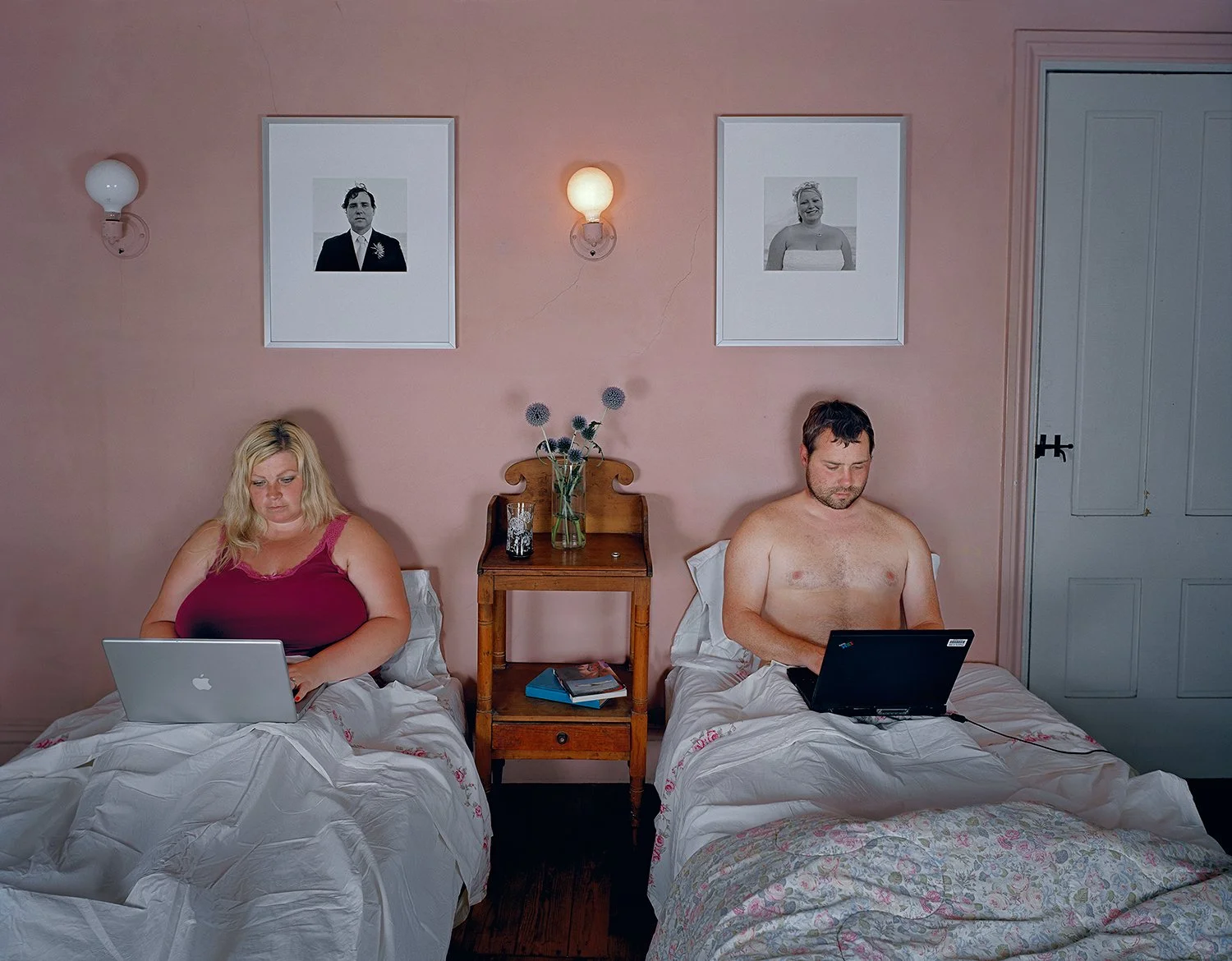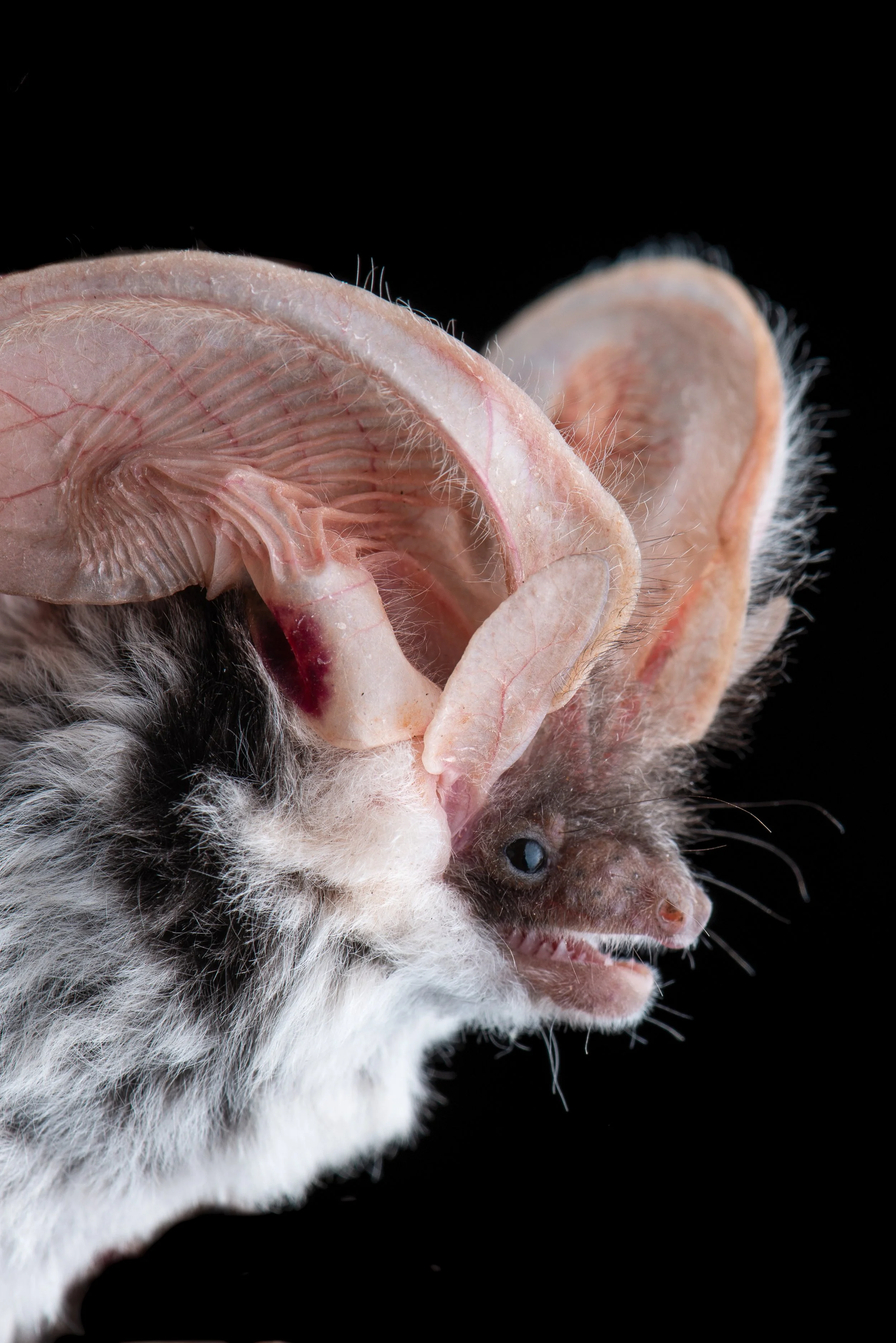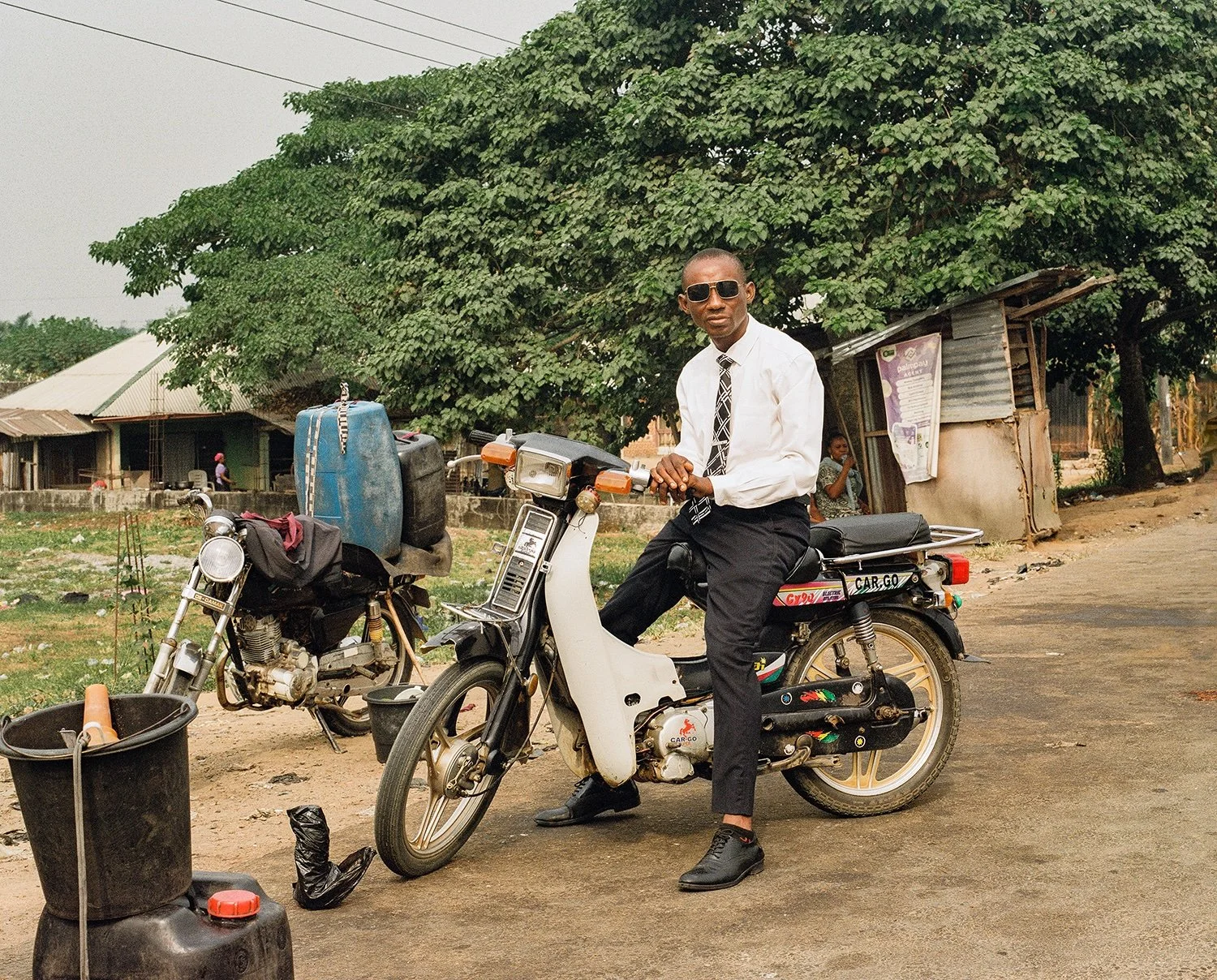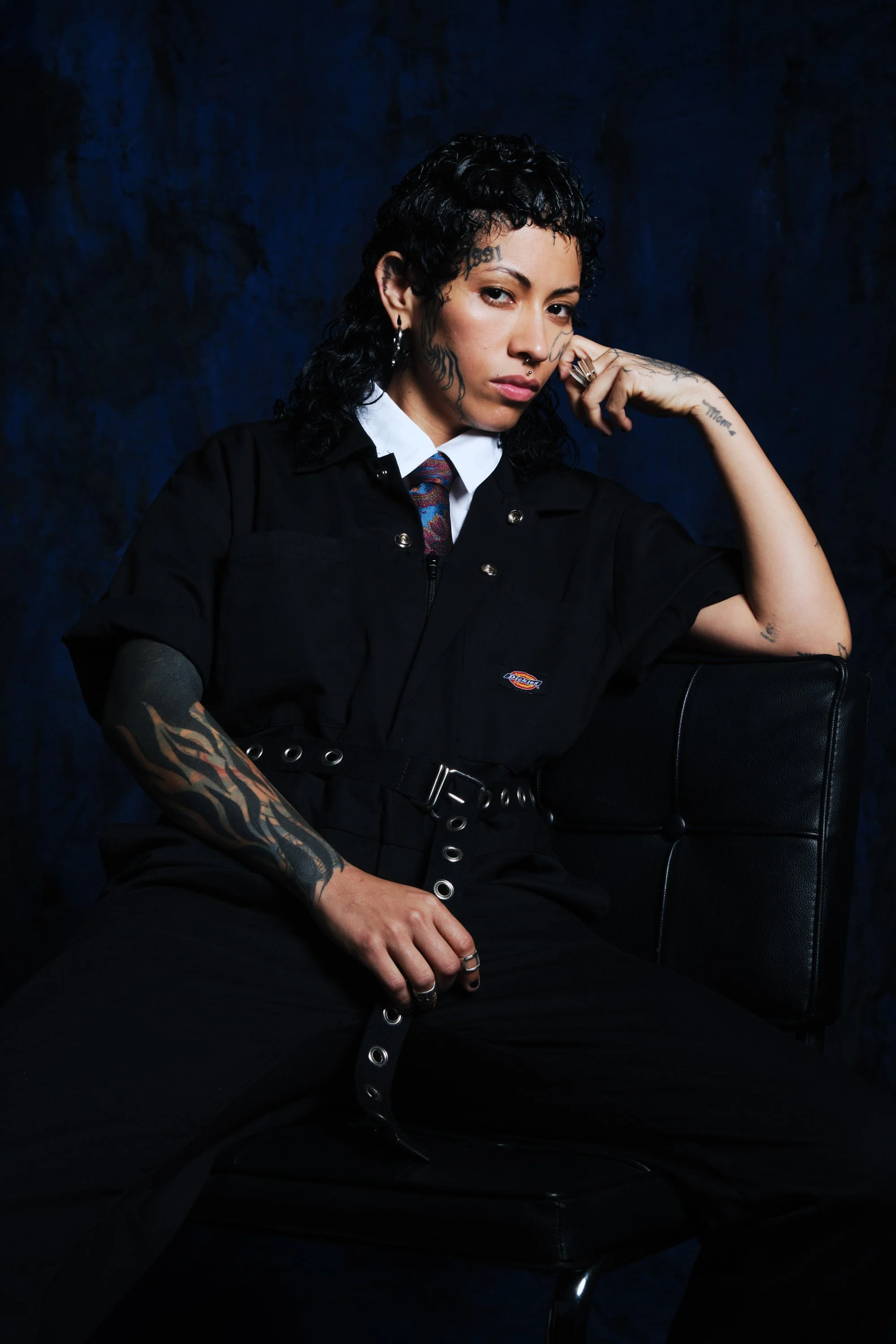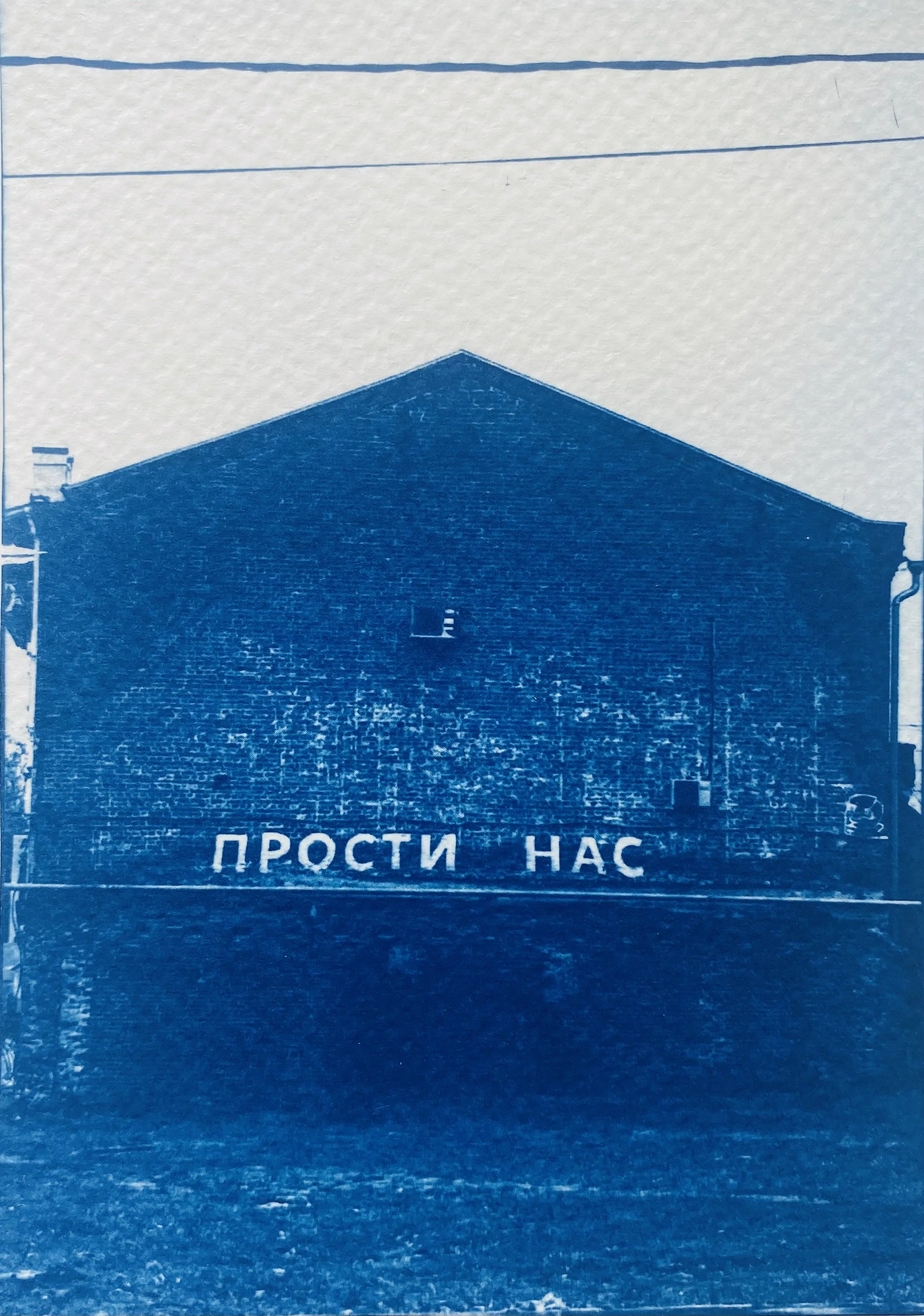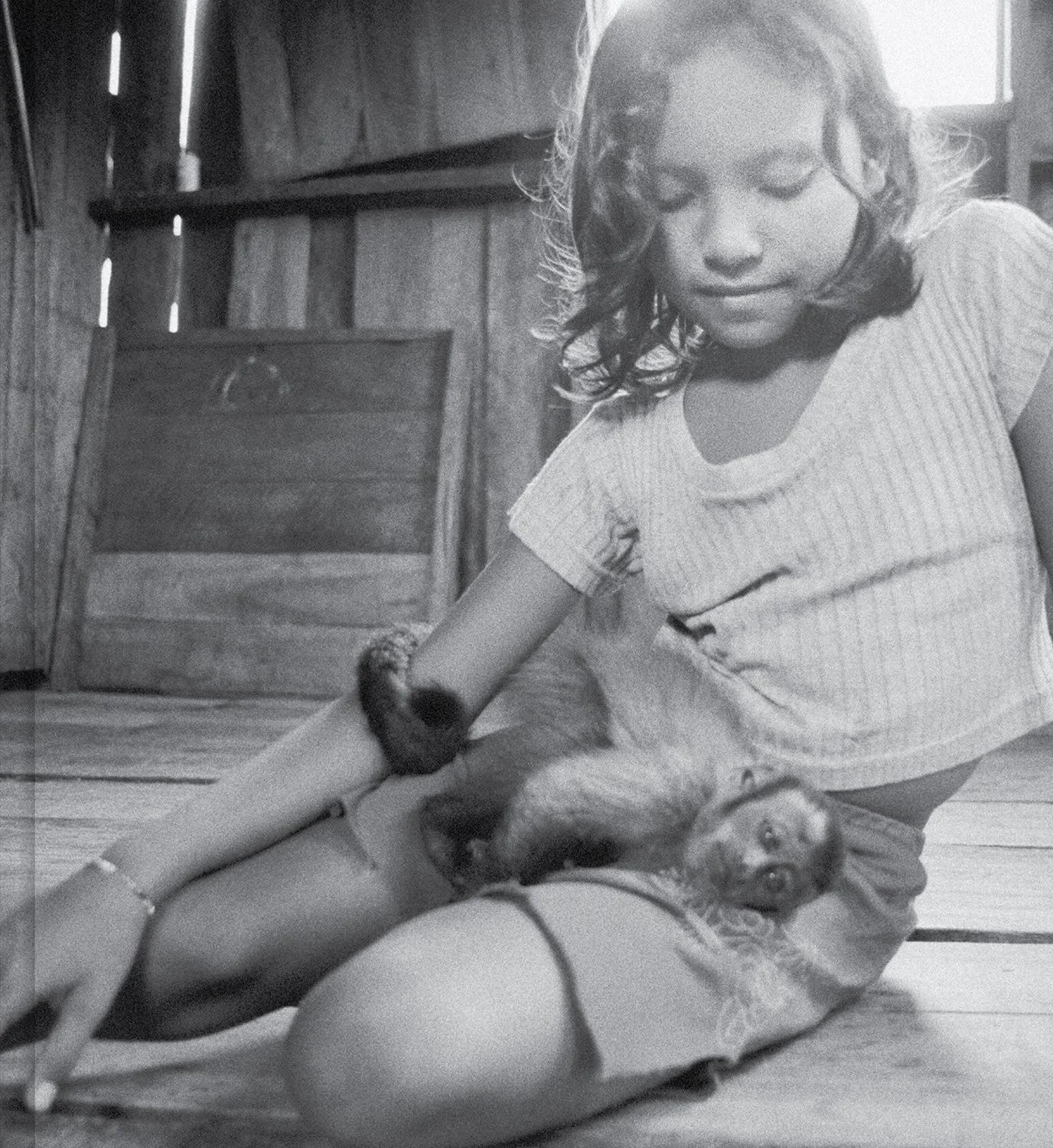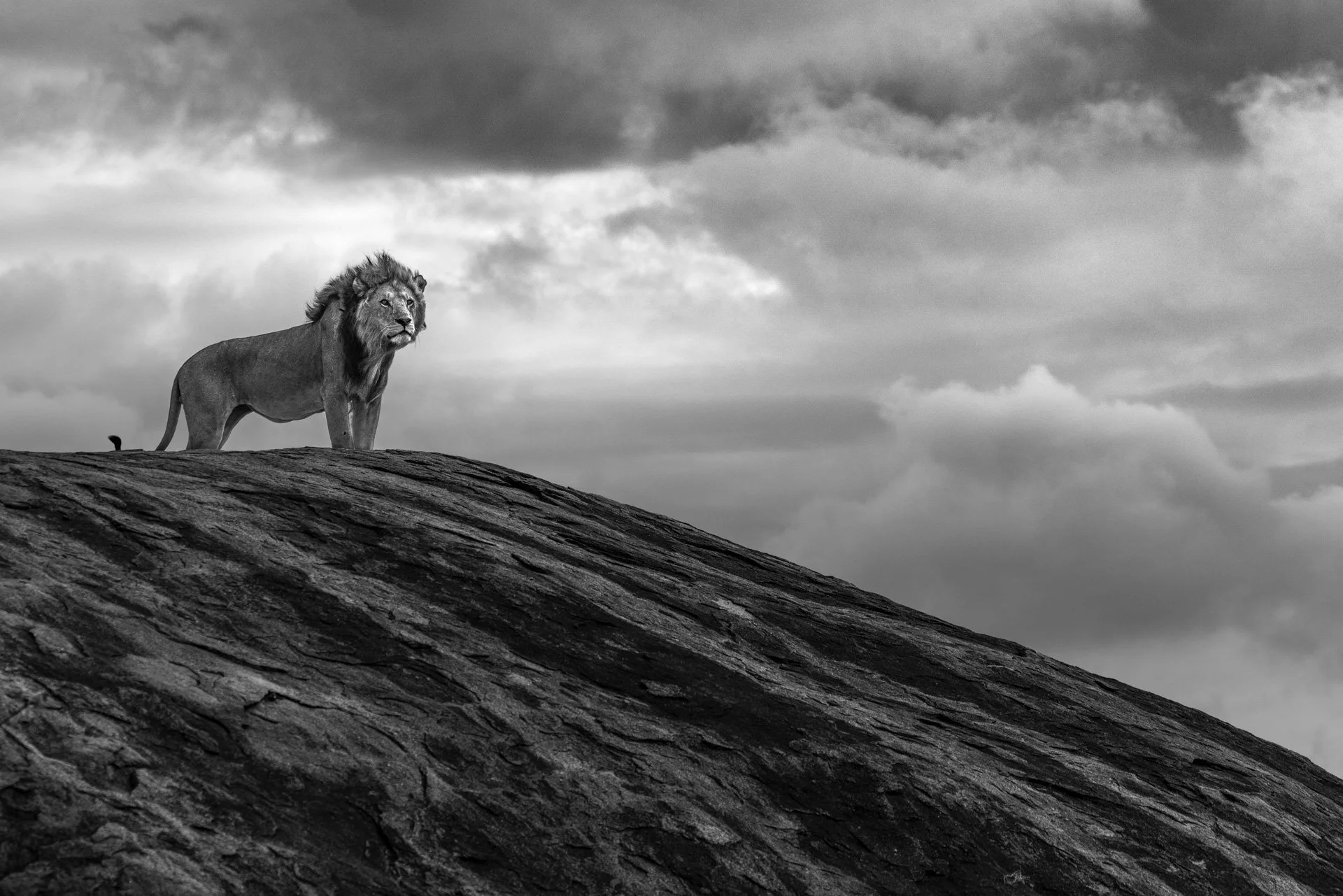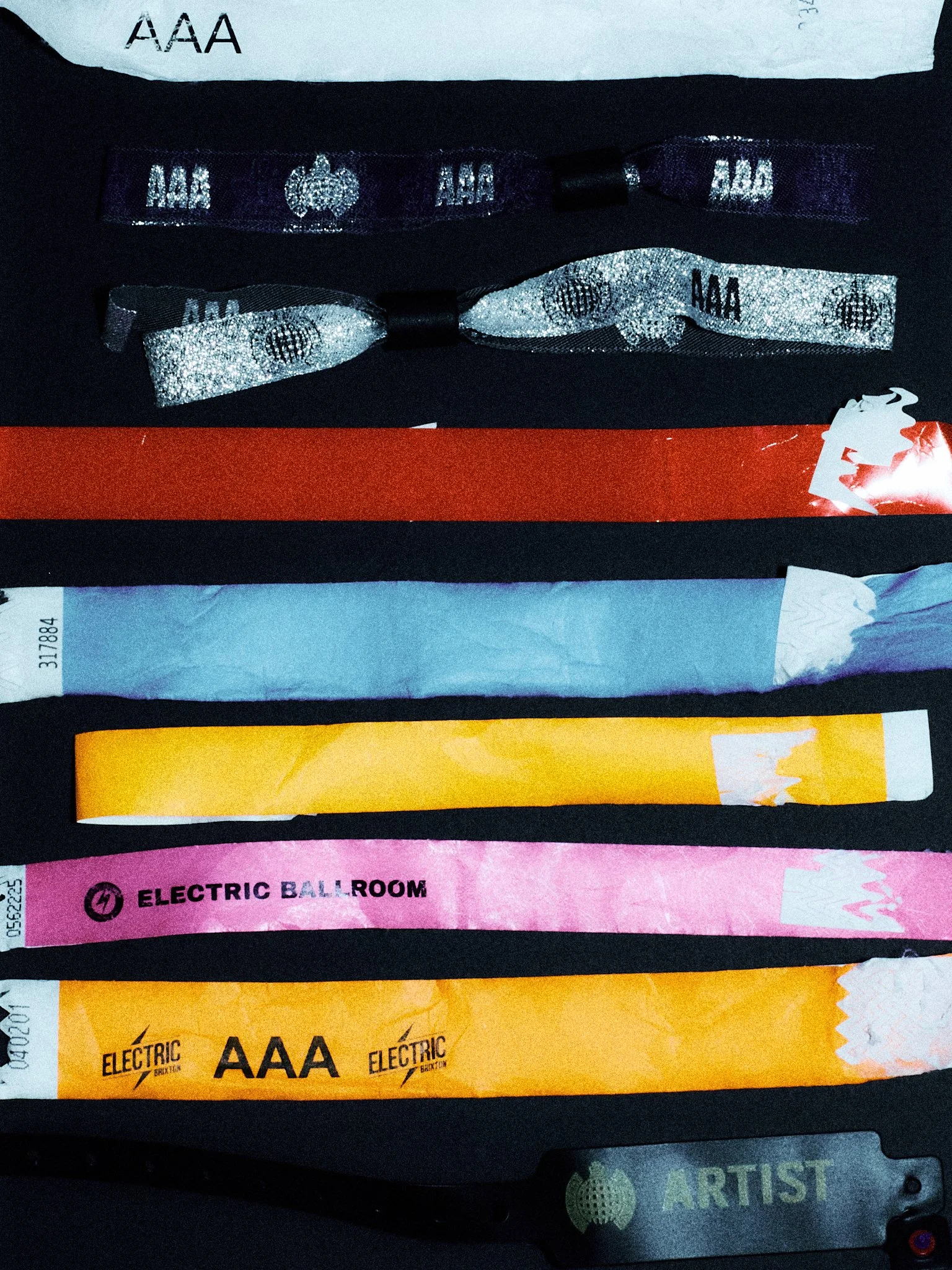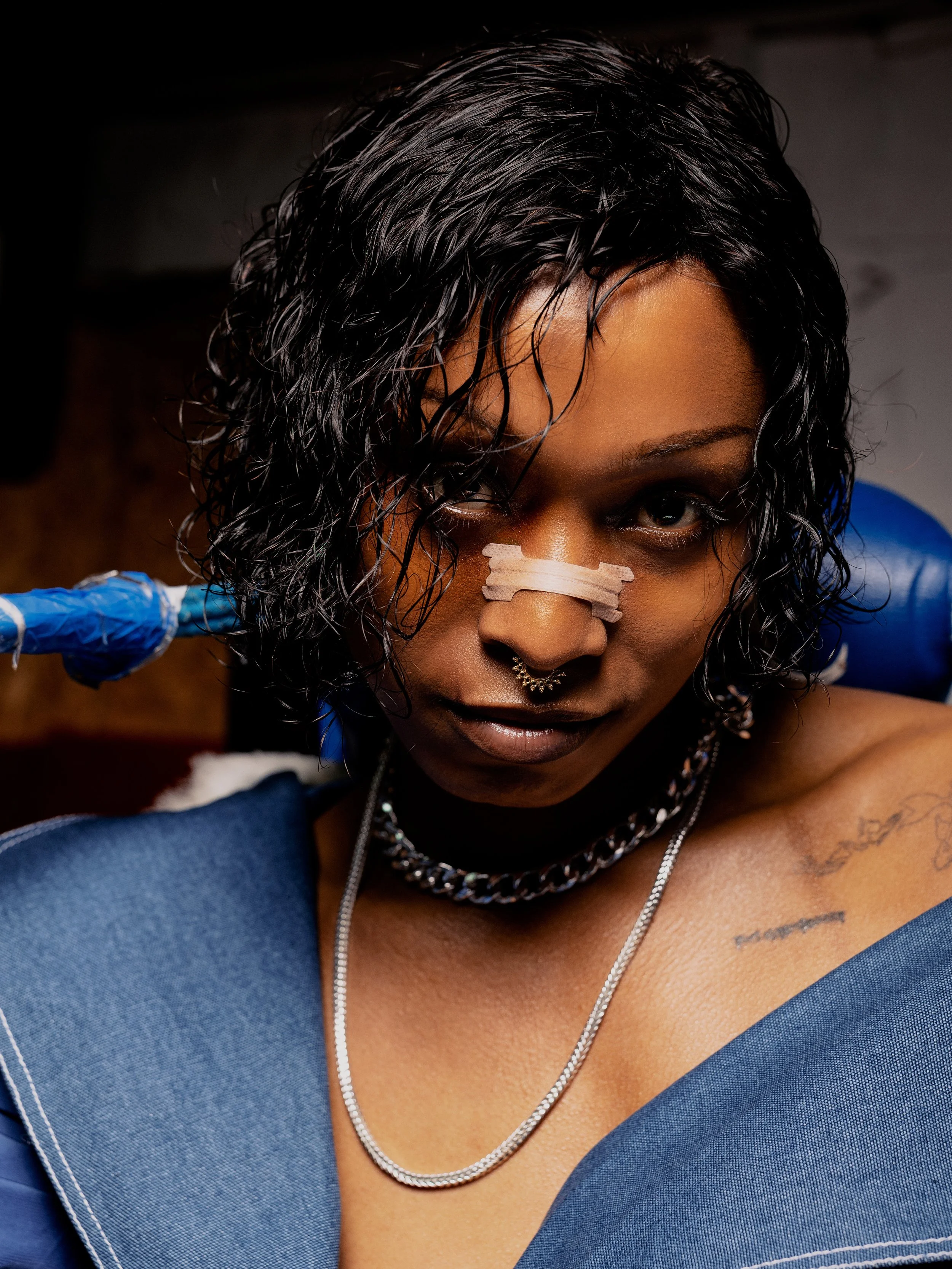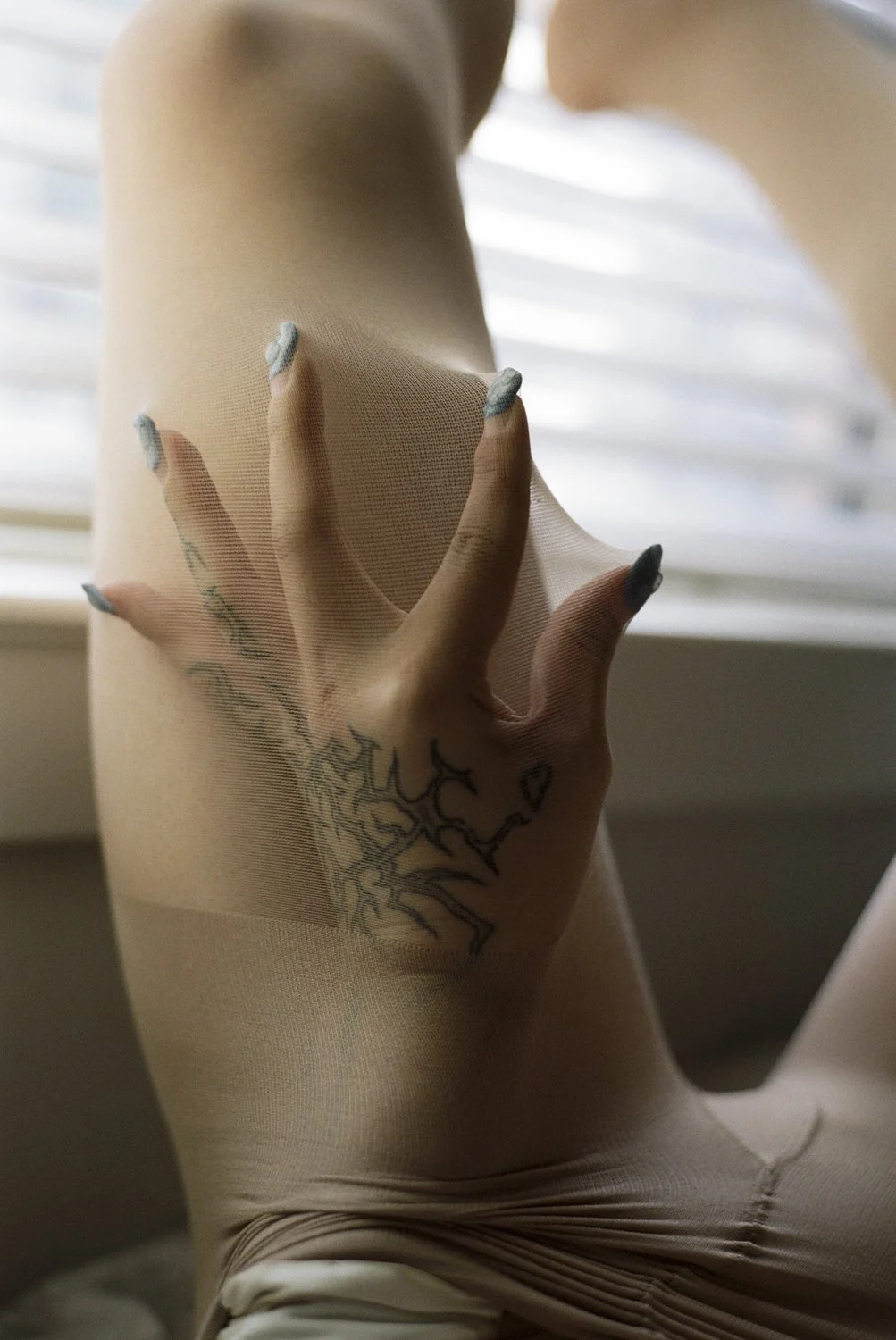Icons: Guy Bourdin: Opulence, Perfectionism, Perversion.
Bourdin’s relationship to narrative in his “live paintings” dominated 70’s fashion photography. However, does his predilection to confront the obscene in his work demean his subject?
Text Holly Wyche Charles Jourdan, 1987
In this regard he was one of the first photographers to inject an apparent story into his work, being inspired by Alfred Hitchcock and the notion of narrative so integral to film that had been previously absent from fashion photography.
Polaroids, unknown
Charles Jourdan, 1976
In conjunction with his predilection for surrealism, Bourdin’s work featured in 70’s French Vogue created a style so fascinating that he became one of the most notable photographers of the time. He harboured a love of Hitchcock that resulted in him being one of the first photographers to inject an apparent story into his photography, and simultaneously found profound surrealist inspiration in Man Ray, (a photographer who we’ve also written about previously in the Icons series here). Ray even began acting as his mentor, writing the catalogue forward for Bourdin's first solo exhibition in 1952.
“Better to live five minutes of happiness rather than an entire life in a conventional way.”
Charles Jourdan, 1976
Charles Jourdan, 1976
Because of this cinematic inspiration Bourdin was famously precise, even shooting up to 30 reels of film for a single shot according to his son. In shooting to capture a tableaux rather than reality, he strove for the precision of a painter and often grappled with grotesque and voyeuristic perspectives in his work. This was most immediately apparent in his work for Charles Jourdan, a French shoe brand that allowed Bourdin to cement his style throughout the 70s.
Charles Jourdan, 1979
“They rejected the traditional product shot in favour of atmospheric, often surreal tableaux and suggestions of narrative.”
However, an uncomfortability in the manner that Bourdin depicts women also immediately shines out. His relationship to women both within his work and personally has been repeatedly questioned, often creating shots that are undeniably fetishistic.
Shoes, 1976
Charles Jourdan, 1977
At the time this was positioned as “Avant-garde”, as another of the boundaries being pushed in fashion photography that came with society’s’ new relationship to nudity and sexualisation, and in some of Bourdin’s work, this ethos is absolutely apparent. However, with others this sexism is almost impossible to ignore.
Charles Jourdan, 1979
Guy Bourdin, 1980
In this regard it's easy to romanticise and abstract the notion of the “tortured creative who strives for perfectionism” from how practically inappropriate their demands may be. Bourdin’s legacy is a prime example of this practice. He frequently demanded ludicrous specificity at the expense of those around him, with anecdotes ranging from quirky demands of background pylons being painted a particular shade of grey, to models being covered in caviar and left under hot lights until putridity and beyond.
"I never saw him being cruel. Guy would push his models, but only to get his vision recorded on celluloid."
It’s evident where his admiration of Hitchcock has not only affected the cinematic nature of his photography, but his directing style as well. As a result Bourdin’s legacy is somewhat marred.
Walking Legs, 1979
What was seen initially as the quirkiness of an auteur has since been repositioned as sexist and representative of the male gaze, with emotive cases being argued on either side in regards to whether this is a failing of Bourdin himself or merely an aspect of his work. "Bourdin was a genius of the gutter, so to speak.”, as Charlotte Cotton described it. Of course an artist can confront the sexist and the fetishistic without holding those values themselves, but on which side of this dichotomy did Bourdin fall? Obviously no absolute claims can be made, but I personally think the behind-the-scenes stories point to these qualities being a personal failing of Bourdin. The less famous stories, beyond the comical ones of Bourdin demanding the sea be dyed a more fitting shade of blue, err more on the sinister side.
Charles Jourdan, Spring 1980
Vogue, 1979
One of the more famous examples follow that once on a shoot, Bourdin demanded to photograph two women covered from head to toe in black pearls, and to do so, poured glue over them and stuck the pearls directly onto the glue. As a result, during shooting the models then began to faint. Bourdin was informed by his editor that the glue prevented the model’s skin from breathing, causing asphyxiation. After being told that the model’s could have died, his response was to smile and say it would have been “beautiful”.
Pearls, unknown
Despite this however the photographic community is hesitant to reduce Bourdin’s work purely to the 2D perspective of a man indulging in his fetishisation of women and being perceived as profound for doing so. Without even pointing to the abstract or cinematic work of Bourdin’s discussed earlier, there is meaning to be found in his more “perverted” art.
Pentax Calendar, 1980
"You get a simultaneous feeling of intense control and impotence in front of his subject, the idea of a barrier [...] the image is the thing, the looking is the thing. He can make anything feel charged with a certain kind of obsession or horror because of this."
Bourdin’s work has commonly been contextualised in this manner, of making the viewer baulk at the notion of looking at a person in the dehumanising way he forces you to look, but also in terms of a surprising empowerment. In discussing his piece, Woman with Portrait of John Travolta, Abbey Bender writes:
“When I first saw the image, I was far more innocent than I wanted to be. I still often feel like I’m failing at femininity in various ways. I find the heightened style and sensual mystique of Woman with Portrait of John Travolta oddly comforting. It’s like a time machine to an archetype of womanhood that’s all the more appealing for being out of reach.”
Portrait of John Travolta, 1979
Once again this is in no way saying that Bourdin’s raunchiest work is feminist and empowering, or anything near those qualities, but just to say that there is certainly an unavoidable nuance to his work that through making the viewer deeply uncomfortable, for better or for worse, brings these viewpoints so uncomfortably to the surface. That is the power of Bourdin.
About Guy Bourdin
Bourdin was born in late 1928 in Paris, shooting for Charles Jourdan, Chanel and many others through the course of his career. He won the Infinity award from the International Center of photography for a Chanel advertisement campaign. He passed in early 1991.
To learn more about Bourdin, more information is available at the Guy Bourdin Estate on both his career and previous exhibitions.
